Stephanie A. Mann's Blog, page 270
June 16, 2013
Kansas Authors Club Convention in Wichita, Kansas
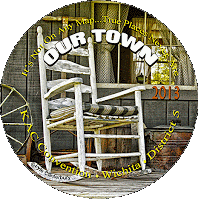 The Kansas Authors Club website is updated with details about the speakers and events for the annual Convention, held this year in Wichita from October 4 to 6 at the Holiday Inn, Wichita East, and hosted by District 5 (to which I belong). I bring this to your attention because I am a speaker at this event. Here's my bio and description of my presentation:
The Kansas Authors Club website is updated with details about the speakers and events for the annual Convention, held this year in Wichita from October 4 to 6 at the Holiday Inn, Wichita East, and hosted by District 5 (to which I belong). I bring this to your attention because I am a speaker at this event. Here's my bio and description of my presentation:Stephanie A. Mann, author of Supremacy and Survival: How Catholics Endured the English Reformation, earned Bachelor of Arts and Master of Arts degrees in English Language and Literature from Wichita State University. She has taught English and History classes at W.S.U. and Newman University, as well as ministry and spirituality-based courses at various religious venues. Working on a second book about the stories of the English Catholic Martyrs, Stephanie has also written articles for online and print publications, and blogs at www.supremacyandsurvival.blogspot.com.
Stephanie will describe strategies she has developed and techniques she employs to promote her non-fiction, historical work to a niche audience of readers interesting in the history of religion in England. With humility and humor, Stephanie outlines her successes and failures, offering insights and lessons learned by using the acronym F.E.A.T.: F = Finding a Publisher and an Audience (research and success); E = Establishing a Platform (broadcast, print, and on-line social media); A = Addressing Challenges and Opportunities (current events and limitations); T = Tracking down Contacts and Customers (networking and working).
“Marketing a Non-Fiction Book to a Niche Audience: It’s Quite a F.E.A.T.”
The Convention Planners have included a wide range of topics on the schedule: fiction, memoir, historical fiction, filmmaking, poetry, etc. Here's the flyer and registration information in case you're local and you're interested.
Published on June 16, 2013 22:30
June 15, 2013
A Tractarian Church in Brighton
The Telegraph featured this column about St. Bartholomew's Anglican Church in Brighton, built in the nineteenth century under the guidance of Reverend Arthur Wagner, a Tractarian High Churchman:
The architect was the local Edmund Scott – not one of the Gilbert Scott clan. He worked with some ideas of the extraordinary man who paid for the church, the Rev Arthur Wagner (1824-1902).
Wagner’s father was a clergyman who had built St Paul’s, Brighton, where his son spent all his ordained life. In furtherance of his High Church ideals, Arthur Wagner built four or five churches in poor areas of Brighton, spending £70,000 (millions in today’s money). “To the shame of the 20th century”, as the new Pevsner puts it, three have been demolished.
Fr Wagner’s style of Tractarian churchmanship became known as London, Brighton and South Coast Religion (in joky reference to the railway company). Wagner favoured not only vestments but also incense. Four confessionals were installed, with little wooden onion domes.
Wagner was not, like others, taken to court under the Public Worship Regulation Act 1874, but he risked prosecution, arguing for his position in books with titles such as Reasons for Disobeying on Principle.
St Bartholomew’s is, if anything, rather frightening in its monumental blankness. It would have been even more overpowering if plans had gone through to extend it eastward with a Lady Chapel at an upper level, beyond three round arches piercing the high east wall.
That plan came to nothing when its sponsor, Fr Arthur Cocks, went over to Rome in 1910. All that relieves the blank of the east wall, from the original plans, is a vast and strange crucifix, painted and incised on encaustic tiles. More easily regarded as beautiful is a baldacchino, 45ft tall, over the altar, added in 1899, of green and pink marble and white alabaster. A green marble pulpit on red marble columns looks down over one side of the nave. In 1911, at the lower level of the east wall, were added some hideous figurative mosaics.
Referencing the parish's website, St. Bartholomew's is still a haven for Anglo-Catholic liturgy in the Church of England, but is most famous for using classical Viennese settings of "the Mass". Today, for example, they performed Mozart's Mass (Missa Brevis) in F (K192)--the Benedictus:
You can see more pictures of St. Bartholomew in Brighton in the Wikipedia article and on the parish website here. And take a look at the vestments!
The architect was the local Edmund Scott – not one of the Gilbert Scott clan. He worked with some ideas of the extraordinary man who paid for the church, the Rev Arthur Wagner (1824-1902).
Wagner’s father was a clergyman who had built St Paul’s, Brighton, where his son spent all his ordained life. In furtherance of his High Church ideals, Arthur Wagner built four or five churches in poor areas of Brighton, spending £70,000 (millions in today’s money). “To the shame of the 20th century”, as the new Pevsner puts it, three have been demolished.
Fr Wagner’s style of Tractarian churchmanship became known as London, Brighton and South Coast Religion (in joky reference to the railway company). Wagner favoured not only vestments but also incense. Four confessionals were installed, with little wooden onion domes.
Wagner was not, like others, taken to court under the Public Worship Regulation Act 1874, but he risked prosecution, arguing for his position in books with titles such as Reasons for Disobeying on Principle.
St Bartholomew’s is, if anything, rather frightening in its monumental blankness. It would have been even more overpowering if plans had gone through to extend it eastward with a Lady Chapel at an upper level, beyond three round arches piercing the high east wall.
That plan came to nothing when its sponsor, Fr Arthur Cocks, went over to Rome in 1910. All that relieves the blank of the east wall, from the original plans, is a vast and strange crucifix, painted and incised on encaustic tiles. More easily regarded as beautiful is a baldacchino, 45ft tall, over the altar, added in 1899, of green and pink marble and white alabaster. A green marble pulpit on red marble columns looks down over one side of the nave. In 1911, at the lower level of the east wall, were added some hideous figurative mosaics.
Referencing the parish's website, St. Bartholomew's is still a haven for Anglo-Catholic liturgy in the Church of England, but is most famous for using classical Viennese settings of "the Mass". Today, for example, they performed Mozart's Mass (Missa Brevis) in F (K192)--the Benedictus:
You can see more pictures of St. Bartholomew in Brighton in the Wikipedia article and on the parish website here. And take a look at the vestments!
Published on June 15, 2013 23:00
Book Review: Rebuilding Catholic Culture
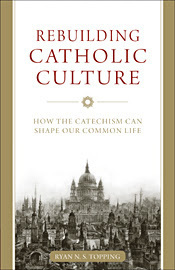
One of my summer reading picks for the Son Rise Morning Show Friday.
I received this book as a premium for making a contribution to PRI (Population Research Institute).
Book description from Sophia Institute Press:
Rarely does a book come along that so succinctly explains the decline of modern culture, articulates a defense of the Church's teachings, and offers a hope-filled path for building a civilization grounded in Catholic truth.
In these pages, Dr. Ryan Topping does all three, pulling back the curtain on the false philosophies of the secularists and showing that in the West today the most formidable threat to freedom is not failing economies or Islam, but secularism. Our best defense, he claims, is a vibrant Catholic culture, and our best hope for creating it lies in the principles found in the Catechism of the Catholic Church.
This book takes you on a masterful journey through the relevant portions of the Catechism, distilling sophisticated theological concepts into words that are simple, clear, and direct, while unpacking its core teachings on faith and morals that nurture true civilizations.
In Rebuilding Catholic Culture, you'll also discover sensible ways to begin restoring Catholic culture — right now — in your own life and family, and in our larger communities as well: in the theater, the classroom, in our hospitals, and even in the public square.
This profoundly accessible book will renew your confidence in the world-transforming character of our Creed and in the potency of our Faith to shape and redefine the culture of the West.
Table of Contents:
Foreword by Aidan Nichols, OP
Acknowledgments
Abbreviations
Introduction
1. On Faith: How Catholics Believe
2. On the Creed: Why Christology Matters
3. On Worship: How Liturgy Transforms
4. On Sacraments: When the World Is Enchanted
5. On Virtue: How Character Forms Conscience
6. On Law: What Love Commands
7. On the Family: How Love Grows
8. On Prayer: What Christ Pleads
Conclusion
Bibliography
Image Credits
About the Author
Index
The organization of the book is very neat, you see: two chapters each for the four parts of the Catechism of the Catholic Church: Dogma; Liturgy; Morality; Prayer: Faith and the Creed; Worship and the Sacraments; Virtue and the Law; Family and Prayer. Throughout the book, Topping considers the state of Catholic culture today, examining the impact of the Second Vatican Council, secularization, etc, and often juxtaposing the decline of Catholic culture with the teachings of the Church in the Catechism. So modern church architecture ignores the role of beauty and order in liturgy; modern thought about conscience, as expressed by Robert Bolt in A Man for All Seasons, contrasts to the true meaning of conscience; current ideas about marriage contrast with the true definition of marriage, the family, and children, etc. I particularly enjoyed Topping's section on Dante's Purgatorio, with the introduction that its only in that part of the Divine Comedy that there is any conflict and drama: the souls in Hell have no hope; the souls in Heaven have all they need and want: the souls in Purgatory are working to expiate the punishments for their sins on earth--they have hope, they will progress, they will achieve sanctification, and they will join the saints in Heaven. The motto for Purgatory, in contrast to Hell, could be "Embrace hope, all ye who enter here."
Another aspect of this book I appreciated is that Topping gives us insight into the decline of Catholic culture in Canada and the triumph of secularism there. Topping offers sketches of a history similar to Russell Shaw's comprehensive American Church , tracing a story of accommodation and acculturation.
I agree with the publisher's blurb that this book "will renew your confidence in the world-transforming character of our Creed and in the potency of our Faith to shape and redefine the culture of the West", but it still makes me sad that we have had to undergo such decline and fall.
Highly recommended.
Published on June 15, 2013 22:30
June 14, 2013
When the Pope Met the Archbishop of Canterbury
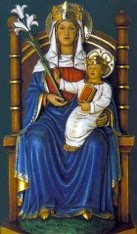
William Oddie of The Catholic Herald had some questions about the value of the visit and said so in a column which received quite a few comments. His crucial question was, would the Pope and the Archbishop "talk about the fact that since the ordination of women to the Anglican version of the priesthood, the possibility of reunion between the two churches has been made an impossibility for all time?".
Now he restates the issue:
I’m sorry to go over the same ground again, but it’s important that we should get this one right, and I confused the issue last time. The danger is not that the visit is happening at all: it is that because of the way in which it is taking place, and because of the very dodgy way the Pontifical Council for Promoting Christian Unity is handling it, the impression is being given that in some way the Pope and the archbishop are equivalent figures, and that Welby’s beliefs about his Church and his office are understood AND RECOGNISED by the Holy See.
It’s essential to remember what those claims actually are. Catholics believe that Henry VIII invented a new church called the Church of England. But that’s not what Anglicanism claims at all. Anglicanism claims that it is continuous with what came before, that it is THE SAME CHURCH as the Ecclesia Anglicana of the Middle Ages and that Archbishop Welby is the direct successor of St Augustine of Canterbury: the Wikipedia article on him begins with the words “Justin Portal Welby … is the 105th and current Archbishop of Canterbury”. The liturgical book of the church which Catholics believe was newly invented but which Anglicans believe is England’s historic Catholic Church, reformed not invented by the Tudors, described itself as The Book of Common Prayer and Administration of the Sacraments and other Rites and Ceremonies of THE CHURCH according to the use of the Church of England (My emphasis).
The consequence of all that is the Anglican claim, explicit or implicit, is that the Catholic Church in England is not what it says it is, because it’s the Church of England which IS in England what the Catholic Church claims to be. In less ecumenical times, the English Catholic Church was sometimes derided as “the Italian mission”.
Those claims are soft-pedalled now, but they are still there. Their modern equivalent is that Anglican bishops, and archbishops, are in some way equivalent and equal to the Catholic bishops: that in these ecumenical times they are somehow in business together.
He then goes on to identify the difficulties he sees with the ongoing Anglican Roman Catholic International Commission (ARCIC) discussions:
Those on the Catholic side are there to represent a coherent doctrinal tradition the objective content of which is accepted by all of them. They would all, for instance, without even thinking about it, see the Catechism of the Catholic Church as being an authoritative expression of that tradition. On the Anglican side, opinions differ widely: some would also accept most of the CCC: others would reject much of it, and particularly what it has to say about the sacraments and the nature of the Church. The Catholic Commissioners represent the Catholic Church: the Anglicans represent only their own personal opinion. There is no consensus between them; how could any consensus emerge between them and the Catholic Church? That is why the ARCIC documents are couched in such vague and ambiguous language: and it is why the CDF has accepted none of them as adequately representing the Catholic view of whatever they were claiming to be about: some they have rejected as clearly heretical.
But what actual harm does ARCIC do, you may ask? Doesn’t it serve the admirable objective of fostering charity between divided Christians? Well, the harm it does is the harm indifferentism and reductionist ecumenism always does. We can see what has happened since the Sixties: the faithful in the pews are uncertain what to believe any more. Everyone always used to say, whatever you think of the Catholics, at least they know what they believe. Not any more they don’t. The pontificates of John Paul II and Benedict XVI began to reverse the disaster of indifferentism: but they never disbanded ARCIC, though JPII did suspend it after the ordination to the Anglican episcopate of an openly and militantly homosexual man. As I wrote last time, “It was a moment in which reality asserted itself. What is unclear is WHY that assertion of reality was itself suspended. Why did ARCIC then recommence operations as though nothing had happened, despite the fact that throughout the Anglican communion, openly gay bishops are now seen as quite normal and there are thousands of women priests, several of whom are even commissioners in the new ARCIC?”
That last sentence does give me pause: how awkward for the ARCIC teams if they would ever discuss the Eucharist, the Real Presence, the priesthood--with such completely different views of the sacraments! And if they will never discuss those issues, how could the ARCIC ever say they really explored the crucial issues that divide Catholics and Anglicans.
The Catholic Herald also provides the text of Pope Francis' remarks at the end of the visit, and the second paragraph in the excerpt below is rather troubling as it seems like an apology, when certainly no apology is needed:
The history of relations between the Church of England and the Catholic Church is long and complex, and not without pain. Recent decades, however, have been marked by a journey of rapprochement and fraternity, and for this we give heartfelt thanks to God. This journey has been brought about both via theological dialogue, through the work of the Anglican-Roman Catholic International Commission, and via the growth of cordial relations at every level through shared daily lives in a spirit of profound mutual respect and sincere cooperation. In this regard, I am very pleased to welcome alongside you Archbishop Vincent Nichols of Westminster. These firm bonds of friendship have enabled us to remain on course even when difficulties have arisen in our theological dialogue that were greater than we could have foreseen at the start of our journey.
I am grateful, too, for the sincere efforts the Church of England has made to understand the reasons that led my Predecessor, Pope Benedict XVI, to provide a canonical structure able to respond to the wishes of those groups of Anglicans who have asked to be received collectively into the Catholic Church: I am sure this will enable the spiritual, liturgical and pastoral traditions that form the Anglican patrimony to be better known and appreciated in the Catholic world.
Today’s meeting is an opportunity to remind ourselves that the search for unity among Christians is prompted not by practical considerations, but by the will of the Lord Jesus Christ himself, who made us his brothers and sisters, children of the One Father. Hence the prayer that we make today is of fundamental importance.
At the risk of sounding more Catholic than the Pope, I must say I'm disappointed in the rather diffident tone of that paragraph. What about the blessing to the Catholic Church of those who have come home to Rome, in what Blessed John Henry Newman called "the one true fold of the Redeemer" as a real example of true ecumenism? As the Personal Ordinariate of Our Lady of Walsingham sums up its brief history:
This new structure within the Catholic Church is a generous and pioneering attempt to heal the wounds of sin and division between Anglicans and Catholics. The Holy Father [Pope Benedict XVI], speaking at St Mary’s College, Oscott, at the end of his 2010 State Visit to the United Kingdom, said the Ordinariate “should be seen as a prophetic gesture that can contribute positively to the developing relations between Anglicans and Catholics. It helps us to set our sights on the ultimate goal of all ecumenical activity: the restoration of full ecclesial communion in the context of which the mutual exchange of gifts from our respective spiritual patrimonies serves as an enrichment to us all”.
Published on June 14, 2013 22:30
June 13, 2013
Summer Reading List on the Son Rise Morning Show
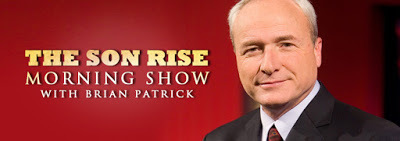 I'll be on the Son Rise Morning Show a little earlier than I usually am--at 7:35 a.m. Eastern, 6:35 a.m. Central--this morning. I'll be sharing my summer reading recommendations with Brian Patrick and the listeners of the EWTN Radio Network.
I'll be on the Son Rise Morning Show a little earlier than I usually am--at 7:35 a.m. Eastern, 6:35 a.m. Central--this morning. I'll be sharing my summer reading recommendations with Brian Patrick and the listeners of the EWTN Radio Network.I have one nonfiction and three fiction books to recommend:
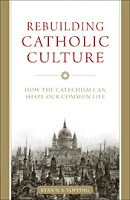 I'll post my review of Ryan S. Topping's Rebuilding Catholic Culture: How the Catechism Can Shape Our Common Life this weekend, but others much more influential and important than I have praised and recommended this book, per the Sophia Institute Press website:
I'll post my review of Ryan S. Topping's Rebuilding Catholic Culture: How the Catechism Can Shape Our Common Life this weekend, but others much more influential and important than I have praised and recommended this book, per the Sophia Institute Press website:"This book deserves to take its place among the Catholic classics."Fr. Aidan Nichols, O.P.Prior of Blackfriars, Cambridge
"This extraordinary book should be read by every Catholic parent, pastor, educator, politician — in fact, everyone."Michael O'Brien
Author of A Father's Tale: A Novel
"This profound work of scholarship is a delight to read. It is shot through with gentle humor, and has a Chestertonian sense of paradox and irony. His exposition of the liturgy is particularly powerful."
Fr. John Saward
Oxford University, and author of Sweet and Blessed Country
"Ryan Topping wields the Catechism as a weapon of wisdom with which he demolishes the nonsense of the worldly philosophies and the sophistries they espouse."Joseph Pearce Writer-in-Residence at the Thomas More College of Liberal Arts
Three works of fiction, starting with The Mirrored World by Debra Dean, which I reviewed here.
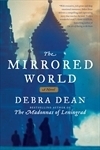
Treason: A Catholic Novel of Elizabethan England, which I reviewed here.
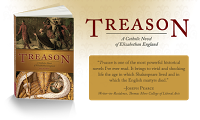 And Mr. Blue, which I discussed here and reviewed here.
And Mr. Blue, which I discussed here and reviewed here.
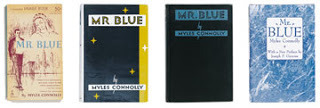
What are your summer reading recommendations or plans? Have you read any of these books and have any comments about them? Please share if you like.
Published on June 13, 2013 22:00
June 12, 2013
Christopher Dawson's Incomplete Trilogy of Church History
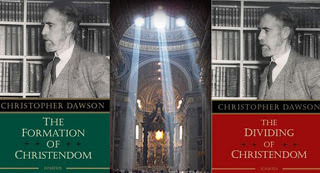
From The Catholic World Report comes this article by Dawson biographer Professor Bradley Birzer, about three of Christopher Dawson's great historical studies:
Although largely ignored in its day, Christopher Dawson’s Christendom trilogy is the masterwork of one of the 20th century’s greatest thinkers.
As it turned out, the Christendom trilogy served as the last great work of English-Welsh historian and man of letters Christopher Dawson (1889-1970). Sort of. The trilogy derived, originally, from lectures Dawson had delivered while teaching at Harvard University between 1958 and 1962. As desired, the Christendom trilogy would consist of The Formation of Christendom (1967); The Dividing of Christendom (1965); and The Return to Christian Unity. In the broad, each volume represented one of three great periods of the Christian world: the ancient-medieval nexus; the Reformation and Counter Reformation; and the Church in the age of democracy, nationalisms, and ideologies.
Though The Formation of Christendom is technically volume one of Christendom, it came out two years later than volume two, The Dividing of Christendom. The idea to publish the lectures as a trilogy came to Dawson in 1963. His publisher, Frank Sheed, readily agreed. The only question was whether to publish them separately as a three-part work or immediately as a three-volume set. Sheed wanted to get them out as soon as possible, as he hoped the books would serve as the basis of discussions for the Second Vatican Council (1962-1965). . . .
If you don't recognize the title of the third book in the trilogy, that's okay: it never has appeared in print:
Unpublished, the only manuscript of the conclusion to the trilogy—badly in need of proof-reading, editing, and organization—resides in the Harvard theological library. Parts of it appeared as articles in various American conservative periodicals in the 1960s. But only very small parts. Someday, perhaps, a publisher might purchase the rights and release it properly. Until then, we must rest content with what Dawson left us.
And Dawson left us a very rich inheritance, indeed.
Perhaps Professor Birzer is the right man for the job of "proof-reading, editing, and organization" the manuscript of The Return to Christian Unity needs--and Ignatius Press the right publisher to "purchase the rights and release it properly"!
Published on June 12, 2013 22:30
June 11, 2013
Father Rutler on Sir Jeffrey Hudson, a Catholic Dwarf
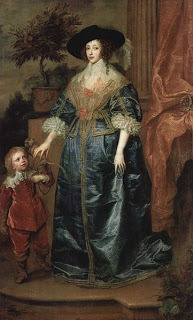 Only Father George Rutler, pastor of The Church of Our Saviour on Park Avenue in New York City, can pull this kind of stuff off--humourous, punning, but never cruel, he here describes the life and career of a Catholic dwarf in the Courts of the Stuarts (from
Crisis Magazine
):
Only Father George Rutler, pastor of The Church of Our Saviour on Park Avenue in New York City, can pull this kind of stuff off--humourous, punning, but never cruel, he here describes the life and career of a Catholic dwarf in the Courts of the Stuarts (from
Crisis Magazine
):In the saga of Catholic curiosities, unique is the smallest known adult Catholic, Sir Jeffrey Hudson who as a man was eighteen inches tall. His parents and siblings were of average height. He was not a typical dwarf, inasmuch as he was perfectly proportioned in every way, only tiny—more of what is called vernacularly a midget, and technically a pituitary dwarf, conditioned by a lack of growth hormone. But his hypopituitarism was without precedent in England and his perfect and delicate miniature size distinguished him from the common Continental court dwarves of his day. As a possible portent, he was born on June 14, 1619 in England’s smallest county, Rutland, whose motto is “Multum in Parvo,” or, Much in Little as David Cameron might try to translate it. His father raised cattle, particularly bulls for baiting, for the Duke of Buckingham. When little Jeffrey failed to grow, he was taken in to the Buckingham household as a “rarity of nature.” He was seven years old and when King Charles I and his queen Henrietta Maria were entertained by the Duke and Duchess of Buckingham, the lavish banquet ended with a large pie out of which popped Jeffrey Hudson in a miniature suit of armor. This gave rise to a rumor that he had been baked in the pie, but this was not the case. The Queen was so delighted that the Buckinghams presented their rarity to her. The Queen kept a separate household at Denmark House in London, and Jeffrey joined it at the end of 1626, along with two disproportionate dwarfs and a Welsh giant. Jeffrey became favored for his wit and elegance, and Inigo Jones wrote costumed masques in which he took part. The French queen’s court was Catholic and housed so many priests that some objections were raised among Londoners who feared a conspiracy might be afoot. Jeffrey embraced Catholicism and kept his faith throughout his difficult life, regularly assisting at Low Masses which occasioned tasteless puns.
I'll keep this post short--read the rest here. Image source: wikipedia commons.
Published on June 11, 2013 23:00
The Catholic Martyrs of Wales (English Reformation Era)
Came a time upon our nationwhen the faith of Rome was banned.Christians found their hearts were brokentorn apart throughout our land.Thus a traitor to the nationanyone who loved the Pope!Christians stood in condemnation;who could bring them any hope?
Men who trained as priests for Cymrucame from Europe’s shores ere long.Traversed far and wide our nation,come to keep the Old Faith strong!Saying Mass and heard confession,priests of God: their only crimeWas that laws of England’s kingdommade such treason, at that time.
Tonight EWTN presents the third episode of its special series on Wales, "The Golden Thread of Faith," which promises to cover the effects of the English Reformation on Wales:
Part 3 From the Reformation to the Present Day Pilgrims King Henry VIII’s unwelcomed “Reformation”, the dissolution of the monasteries, Welsh recusants, Civil wars, the Titus Oates plot and the Welsh martyrs. Today Welsh Catholics can once again practice their faith and go on pilgrimages.
There are six Welsh martyrs among the 40 Martyrs of England and Wales--two from the Tudor era, one from the reign of James I, and three from the Popish Plot:
St Richard Gwyn - a layman and school-teacher, hung, drawn and quartered on October 17, 1584
St John Jones - hung, drawn, and quartered after two year's imprisonment and torture on July 12, 1589
St John Roberts - executed at Tyburn on December 10, 1610
St Philip Evans - and St John Lloyd - both executed in connection with the fake Popish Plot on July 22, 2012
St David Lewis - The Last Welsh Martyr. Executed on August 27, 1679
There are a few Welsh martyrs among the 85 Martyrs of England and Wales beatified by Blessed John Paul II in 1987:
Blessed Roger Cadwallador certainly has a Welsh name;
Blessed William Davies;
And the Irishman, Blessed Charles Mahoney, who was executed in Wales--his last words were: "Now Almighty God is pleased I should suffer this martyrdom. His Holy Name be praised since I die for my religion."
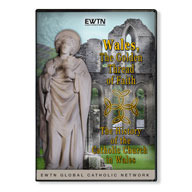 The six canonized martyrs and their companions (the beatified) are honored on a separate Feast Day (separate from the May 4th Feast Day for all the Catholics Martyrs of the English Reformation in England and Wales) on the 25th of October. That was the original date of the canonization of the 40 Martyrs of England and Wales by Pope Paul VI in 1970.
The six canonized martyrs and their companions (the beatified) are honored on a separate Feast Day (separate from the May 4th Feast Day for all the Catholics Martyrs of the English Reformation in England and Wales) on the 25th of October. That was the original date of the canonization of the 40 Martyrs of England and Wales by Pope Paul VI in 1970.
Here is a link to a nice set of devotions to all the Welsh martyrs, including Sts. Julius and Aaron from the era of Roman occupation (episode I). It is the source of the hymn quoted above.
This series is a co-production of EWTN and the Latin Mass Society of England and Wales. The DVD for the program should be available soon.
Men who trained as priests for Cymrucame from Europe’s shores ere long.Traversed far and wide our nation,come to keep the Old Faith strong!Saying Mass and heard confession,priests of God: their only crimeWas that laws of England’s kingdommade such treason, at that time.
Tonight EWTN presents the third episode of its special series on Wales, "The Golden Thread of Faith," which promises to cover the effects of the English Reformation on Wales:
Part 3 From the Reformation to the Present Day Pilgrims King Henry VIII’s unwelcomed “Reformation”, the dissolution of the monasteries, Welsh recusants, Civil wars, the Titus Oates plot and the Welsh martyrs. Today Welsh Catholics can once again practice their faith and go on pilgrimages.
There are six Welsh martyrs among the 40 Martyrs of England and Wales--two from the Tudor era, one from the reign of James I, and three from the Popish Plot:
St Richard Gwyn - a layman and school-teacher, hung, drawn and quartered on October 17, 1584
St John Jones - hung, drawn, and quartered after two year's imprisonment and torture on July 12, 1589
St John Roberts - executed at Tyburn on December 10, 1610
St Philip Evans - and St John Lloyd - both executed in connection with the fake Popish Plot on July 22, 2012
St David Lewis - The Last Welsh Martyr. Executed on August 27, 1679
There are a few Welsh martyrs among the 85 Martyrs of England and Wales beatified by Blessed John Paul II in 1987:
Blessed Roger Cadwallador certainly has a Welsh name;
Blessed William Davies;
And the Irishman, Blessed Charles Mahoney, who was executed in Wales--his last words were: "Now Almighty God is pleased I should suffer this martyrdom. His Holy Name be praised since I die for my religion."
 The six canonized martyrs and their companions (the beatified) are honored on a separate Feast Day (separate from the May 4th Feast Day for all the Catholics Martyrs of the English Reformation in England and Wales) on the 25th of October. That was the original date of the canonization of the 40 Martyrs of England and Wales by Pope Paul VI in 1970.
The six canonized martyrs and their companions (the beatified) are honored on a separate Feast Day (separate from the May 4th Feast Day for all the Catholics Martyrs of the English Reformation in England and Wales) on the 25th of October. That was the original date of the canonization of the 40 Martyrs of England and Wales by Pope Paul VI in 1970.Here is a link to a nice set of devotions to all the Welsh martyrs, including Sts. Julius and Aaron from the era of Roman occupation (episode I). It is the source of the hymn quoted above.
This series is a co-production of EWTN and the Latin Mass Society of England and Wales. The DVD for the program should be available soon.
Published on June 11, 2013 22:30
June 10, 2013
Sunday Mornings at Our House: Ireland on the Radio
 We are up betimes at our house Sunday morning--except for the dogs, who go back to sleep--getting ready to attend 8:00 a.m. at the Church of St. Anthony of Padua. One highlight every Sunday is EWTN's Catholic Connection, with Kathy Kinnott broadcasting from Cork, Ireland--it's on at 6 a.m.
We are up betimes at our house Sunday morning--except for the dogs, who go back to sleep--getting ready to attend 8:00 a.m. at the Church of St. Anthony of Padua. One highlight every Sunday is EWTN's Catholic Connection, with Kathy Kinnott broadcasting from Cork, Ireland--it's on at 6 a.m.On Sunday, June 1 she had a really great episode on a publication distributed in Ireland called Alive! and an interview with an English professor at Ave Maria University:
One of Ireland's most popular Catholic newspaper is the Alive! Kathy talks to founder and editor of Alive! Fr. Brian McKevitt, OP about the ups and downs of publishing a Catholic newspaper in an often hostile secular media environment. Part 2. The great British poets Gerard Manley Hopkins, Samuel Taylor Coleridge and Blessed John Henry Newman were masters of the art of verse in their day. Kathy and her guest to Dr. (Michael) Raiger, assistant professor of literature, Ave Maria University Florida, talk about how the beauty and depths of their poetry are interwoven with the beauty of God and his creation.
Here's a blog post from Ave Maria University that gives excellent background to Dr. Raiger's in the interview:
Dr. Michael Raiger , Assistant Professor of Literature at the university, has devoted much of his academic career to recovering Coleridge’s Trinitarian thought. Embedded in the life of Coleridge was a stay in Malta, from 1804 to 1805, followed by a nine-month sojourn through Italy, including five weeks in the Vatican where he studied Catholic art and architecture during the Easter season of 1806. It is during his stay in Malta that Coleridge’s decade-long fling with Unitarianism (Coleridge’s father was an Anglican minister in the Devonshire village Ottery-St. Mary) ended with an acceptance of the doctrine of the Trinity—we have the precise moment recorded in one of his notebooks, dated Feb. 12, 1805, 1:30 p.m., in which Coleridge wrote: “No Christ, No God…No Trinity, No God…Unitarianism in all its forms is Idolatry.” It is this seminal moment, argues Raiger, and the lengthy stay in the Sistine Chapel the following year, that informs Coleridge’s most important reflections on the relationship between art and aesthetics on the one hand, and religious sensibility and theological speculation on the other. The claim is a bold one, and goes against forty years of scholarship on Coleridge, which sees him as borrowing bits and pieces from German Idealism, mostly Kantian, in the construction of a rather esoteric and inconsistent defense of Christianity. To the end of countering this position, Dr. Raiger will travel to Malta in mid-November to deliver a paper entitled, “The Italian Influences on Coleridge’s Later Poetic Principles,” at the international conference “Encountering Malta: British Writers and the Mediterranean, 1760-1840.” . . .
As a follow up to his discussion of poetry and Romanticism, here's one of Hopkins' "nature" poems, "As Kingfishers Catch Fire"--
As kingfishers catch fire, dragonflies draw flame;
As tumbled over rim in roundy wells
Stones ring; like each tucked string tells, each hung bell's
Bow swung finds tongue to fling out broad its name;
Each mortal thing does one thing and the same:
Deals out that being indoors each one dwells;
Selves -- goes itself; myself it speaks and spells,
Crying What I do is me: for that I came.
I say more: the just man justices;
Keeps grace: that keeps all his goings graces;
Acts in God's eye what in God's eye he is --
Christ. For Christ plays in ten thousand places,
Lovely in limbs, and lovely in eyes not his
To the Father through the features of men's faces.
Published on June 10, 2013 22:30
June 9, 2013
Two Translations by Edward Caswall for the Sacred Heart of Jesus
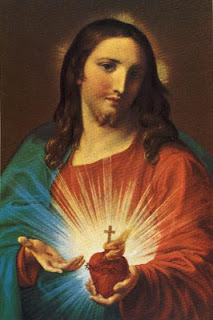
Yesterday we sang two hymns for the Feast of the Sacred Heart of Jesus at Sunday Mass (celebrating the External Feast rather than the Third Sunday after Pentecost in the Extraordinary Form of the Latin Liturgy of the Roman Rite): both were translated by Edward Caswall, an Oxford Movement convert to "the Church of Rome" as one source tells it.
The first was "To Christ, the Prince of Peace" a translation of "Summi Parentis Filio", sung--with spirit--to the tune St. George by Henry J. Gauntlet:
To Christ, the Prince of peace,
And Son of God most high,
The Father of the world to come,
We lift our joyful cry.
Deep in His heart for us
The wound of love He bore,
That love which He enkindles still
In hearts that Him adore.
O Jesu, Victim blest,
What else but love divine
Could Thee constrain to open thus
That sacred heart of Thine?
O wondrous Fount of love,
O Well of waters free,
O heavenly Flame, refining Fire,
O burning Charity!
Hide us in Thy dear heart,
Jesu, our Savior blest,
So shall we find Thy plenteous grace
And Heav’n’s eternal rest.
The other was "All You Who Seek a Comfort Sure", sung to the tune St. Bernard:
1 All ye who seek for sure relief
In trouble and distress,
Whatever sorrow vex the mind,
Or guilt the soul oppress:
2 Jesus, Who gave Himself for you,
Upon the Cross to die,
Opens to you His sacred heart:
O to that heart draw nigh.
3 Ye hear how kindly He invites;
Ye hear His words so blest:
"All ye that labour come to me,
And I will give you rest.'
4 O Jesus, joy of saints on high,
Thou hope of sinners here,
Attracted by those loving words,
To Thee I lift my prayer.
5 Wash Thou my wounds in that dear blood
Which forth from Thee doth flow;
New grace, new hope inspire; a new
And better heart bestow.
According to the old Catholic Encyclopedia , Father Edward Caswall was an
Oratorian and poet, b. 15 July 1814, at Yately, Hampshire, of which place his father, the Rev. R. C. Caswall, was vicar; d. at the Oratory, Birmingham, 2 January, 1878. He was educated at Marlborough Grammar School and at Brasenose College, Oxford, where he was Hulme exhibitioner. Before leaving Oxford he published, under the pseudonym of Scriblerus Redivivus, "The Art of Pluck", in imitation of Aristotle, a witty satire upon the ways of the careless college student, which still has a circulation. To the eighth edition, in 1843, he wrote a special preface of regret for certain passages, now excluded, which, at that later date, he had come to regard as irreverent. In 1838 he was ordained deacon, and in 1839 priest, in the Church of England. In 1840 he became perpetual curate of Stratford-sub-Castle in the diocese of his uncle, Dr. Burgess, Bishop of Salisbury. In 1846 he published "Sermons on the Seen and the Unseen", a volume of thoughtful discourses marked by the same tender and fervent piety found in his well-known hymns, and by a clear leaning to certain elements of Catholic doctrine. Soon afterwards, having come under the influence of Cardinal (then Dr.) Newman and the "Tracts for the Times", he resigned his curacy and, in January, 1847, was received into the Church by Cardinal Acton at Rome. In 1849 Caswall's wife, who had also become a Catholic, died suddenly of cholera, and early in 1850 he became an Oratorian. In 1852 he was ordained priest, and lived at the Oratory until his death. He was buried at Rednal, in the private cemetery of the congregation, near the grave of Cardinal Newman. Besides various manuals of devotion, several of which he translated from the French, his principal works are: "Lyra Catholica", a translation of all the Breviary and Missal hymns with some others (often reprinted; last edition, London, 1884); "The Masque of Mary and other Poems", original poetry, thoughtful, imaginative, tender, and full of zealous faith, a book which drew from Cardinal Newman, in return, a remarkable poem addressed to the author (reprinted several times; last edition, London, 1887); "The Catholic's Latin Instructor in the principal Church offices and devotions" (frequently reprinted; last edition, London, 1897).
Published on June 09, 2013 22:30



